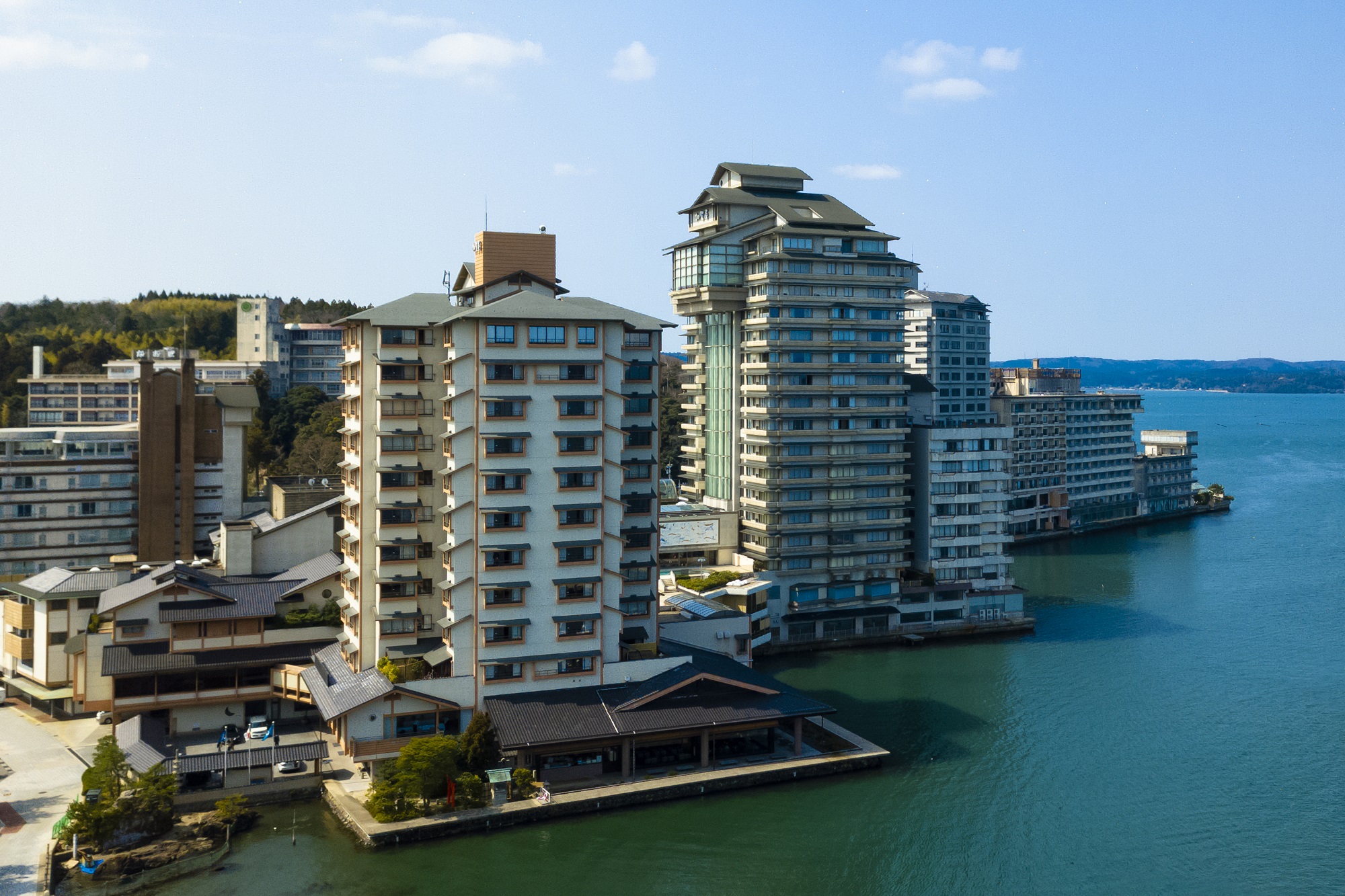Kenroku-en / 兼六園 (Ishikawa)
About Kenroku-en
Along with Kairaku-en in Mito and Koraku-en in Okayama, Kenroku-en stands as one of the three most beautiful gardens in Japan and is a must-visit spot in Kanazawa. Kenroku-en has been designated a national special place of scenic beauty. Kenroku-en was created over a prolonged period by successive lords of the Kaga Domain, as a prominent garden exclusively for the pleasure of daimyo [feudal lords] during the Edo Era (1600/1603-1868), still has picturesque scenery all year round.

By introducing the element of the "Kaiyu [strolling]-style” garden, Kenroku-en is laid out with a variety of gardening techniques from different periods. The "Kaiyu [strolling]-style" garden consists of large ponds, hills, cottages and tea houses arranged on spacious ground to take a walk through the garden. Because of the geographic features such as winding streams connecting several ponds and artificially built hills with a variety of trees, this style is also referred to as a “'Kaiyu [strolling]-style' landscape garden incorporating ponds and hills”.
The name "Kenroku-en" literally means “garden that combines six characteristics”, representing the attributes which bring out the garden's stunning beauties of spaciousness and seclusion, artifice and antiquity, watercourses and panoramas.
Kenroku-en received the highest rating of three stars in the Michelin Green Guide Japan and is also a popular tourist destination attracting visitors from abroad.
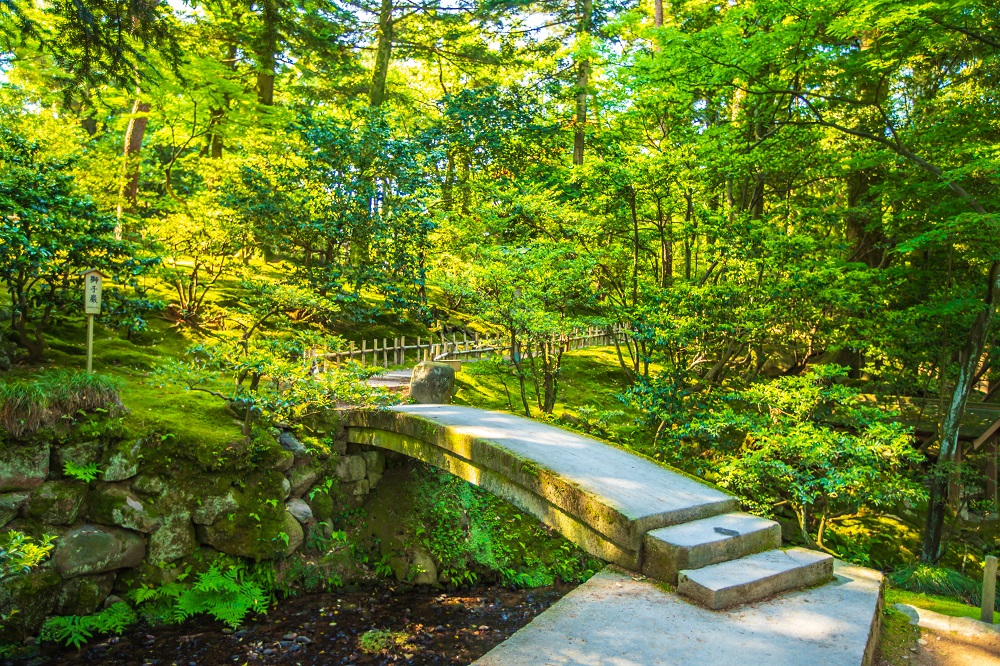
At Kenroku-en, beautiful seasonal scenery may be enjoyed, the cherry blossoms in spring, fresh greenery in early summer, autumn leaves, and "Yukitsuri" trees protected from snow in winter. Kenroku-en has been selected as one of the 100 best cherry blossom viewing spots in Japan, including Sakuragaoka and Renchimon-dori and many other vantage points to appreciate the cherry blossoms in all their glory. The "Kenroku-en Chrysanthemum Cherry Tree" has a particularly impressive sight to behold, with a rare variety with more than 300-petals on flower. In winter, catch a firsthand glimpse of "Yukitsuri", a technique to perserve trees and shrubs from heavy snow. A rope is suspended from a pole in the center of the tree and stretched taut from the branches in radial pattern, making it appear as though the tree is holding an umbrella, thus creating yet another poetic feature of Kenroku-en Garden - exclusive in winter. The Yukitsuri of the largest branches in the park, Karasaki Pine Tree, is particularly spectacular.
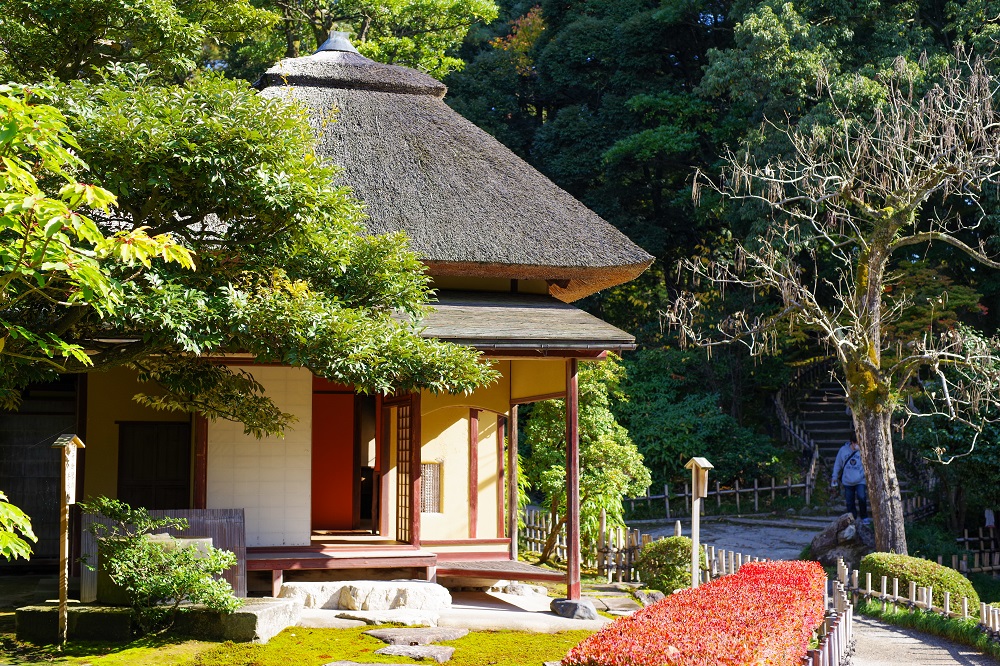
There are many restaurants and souvenir shops in Kenroku-en, to savor local dishes of Ishikawa Prefecture, starting with “Jibu-ni” [stewed chicken and vegetables], and soft-served ice cream with gold leaf. Also, appreciate the beautiful scenery of the garden while enjoying authentic Japanese treats "green tea and dango [sweet dumpings]". At the center of the garden is the "Izuze Tea House", serving the "Kenroku dango", homemade dumplings [dango] made with recipe passed down through generations for over 140 years. Relish the beautiful view of Kenroku-en while enjoying the "Kenroku dango" and other sweet treats.
Getting there and around
by Bus
■From Kanazawa Station: Take the "Kanazawa Loop Bus" of Hokuriku Railroad Bus to "Kenrokuen Garden・Kanazawa Castle Park" Bus Stop (RL6) Duration: About 15 minutes
by Taxi
About 10 minute ride from Kanazawa Station.
Recommendations
Kotoji Stone Lantern / 徽軫灯籠(ことじとうろう)
First seen, when walking straight up from the Katsurazaka Gate to Kasumigaike is the “Kotoji Stone Lantern”, the two-legged 2.67 meters high lantern in the pond, which is known for the symbol of Kenroku-en.
Named "Kotoji" [koto pillar], from the resemblance to a koto pillar supporting the strings of koto [Japanese harp]. It is also a perfect spot for commemorative photos.

Kasumiga-ike Pond / 霞ヶ池
The largest pond in Kenroku-en, with an area of about 5,800 square meters featuring a turtle-shaped island called "Horaijima" in the center of the pond. Depending on the viewing position, different aspects are seen.
The appearance of ducks and herons resting their wings, and fish, such as carp, swimming is elegant and soothing. Take a stroll around the pond and catch the highlights of Kenroku-en, located around the pond.
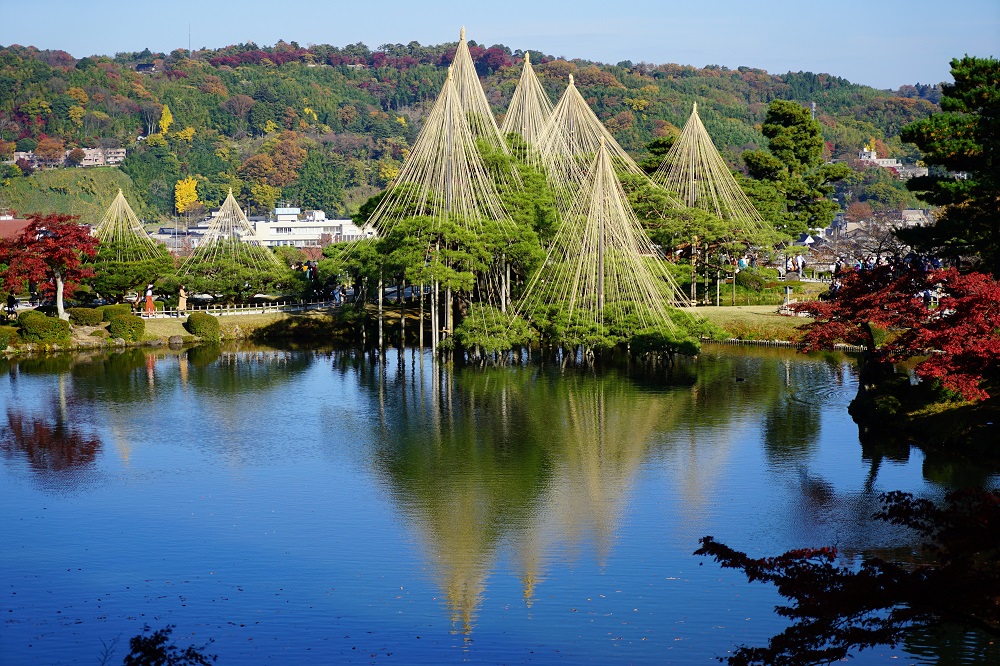
Hanami-Bashi [Flower Viewing Bridge] / 花見橋
A graceful warped wooden bridge with "Giboshi" balustrade. A photo spot to enjoy the seasonal scenery from the bridge, with cherry blossoms in spring, azaleas and iris in early summer, colored leaves in autumn, and snowy scenery in winter. The curved flow of water with Tatsumi Yosui Canal is made to flow at the same speed over the entire river surface at all times.

Shigure-tei Tea House / 時雨亭
The beginning of Kenrokuen was in 1676 (Empo 4), when Maeda Tsunanori, the 5th lord of the Kaga Domain, moved the construction office inside the castle to build on the site a villa called "Renchi-ochin" and a surrounding garden.
The villa was rebuilt by the 6th lord Yoshinori in front of the current fountain, up until the destruction at the beginning of the Meiji Era. During the latter half of the rule of the domain it was also called "Shigure-tei". It was restored at its current site in March 2000, and the 10-mat and 8-mat zashiki [Japanese-style rooms] facing the garden and the connecting okakoi [enclosure] were restored based on the floor plan preserved from that time.
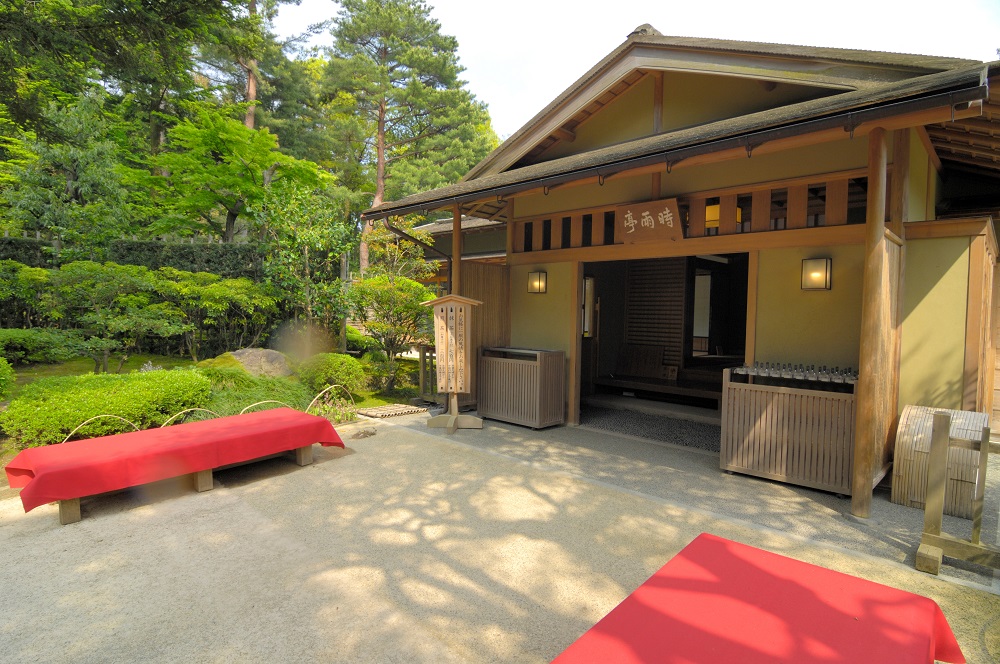
Illumination events / ライトアップ情報
The illumination events held in Kenroku-en regularly are: the cherry blossoms during the spring, firefly viewing party held in early July, the "Nagatsuki no Dan" to enjoy the famous moon in the fall, and the silvery-white world covered in snow in winter to set aglow with heartwarming lights.

Kanazawa Castle Park / 金沢城公園
Kanazawa Castle Park was built on the site of the former Kanazawa Castle. In addition to "Ishikawa-mon", “Sanjukken Nagaya Warehouse” and “Tsurumaru Storehouse” are also designated as Important Cultural Properties, with the recently restored “Hishi Yagura”, “Gojyukken Nagaya”, “Hashizume-mon Tsuzuki Yagura” and “Kahoku-mon gate”, being among the highlights of the park. Buildings designated as Important Cultural Properties are seen only on special occasions, so check the schedule in advance.

Travel Recommendations
There are admission free hours during the early morning, before the Kenroku-en opening hours. From April through August, the gates are open from 4:00 am, and in March, Sepbember, and October, the gates open at 5:00 am and from November through February, the gates open at 6:00 am for a quiet, leisurely and peaceful stroll. The regular opening hours differ for each date, so please refer to the official homepage for the opening hours. Kenroku-en is only accessible from the Renchimon Entrance and Zuishinzaka Entrance during the admission free hours. Be sure to be out from the Kenroku-en property at least 15 minutes before business hours, when visiting during the admission free hours.
Accommodations
Kagaya / 加賀屋(Ishikawa)
-Closed due to the impact of the 2024 Noto Peninsula Earthquake-
-Re-opening at the end of the fiscal year 2027-
80 Yo-Bu, Wakura-Machi, Nanao-shi, Ishikawa
Established in September 1906, Kagaya was initially a modest inn with 12 rooms that could accommodate approximately 30 people. With 117 years of history, Kagaya is known as one of the largest luxury hot spring inns not only in the Wakura Onsen area, ....

